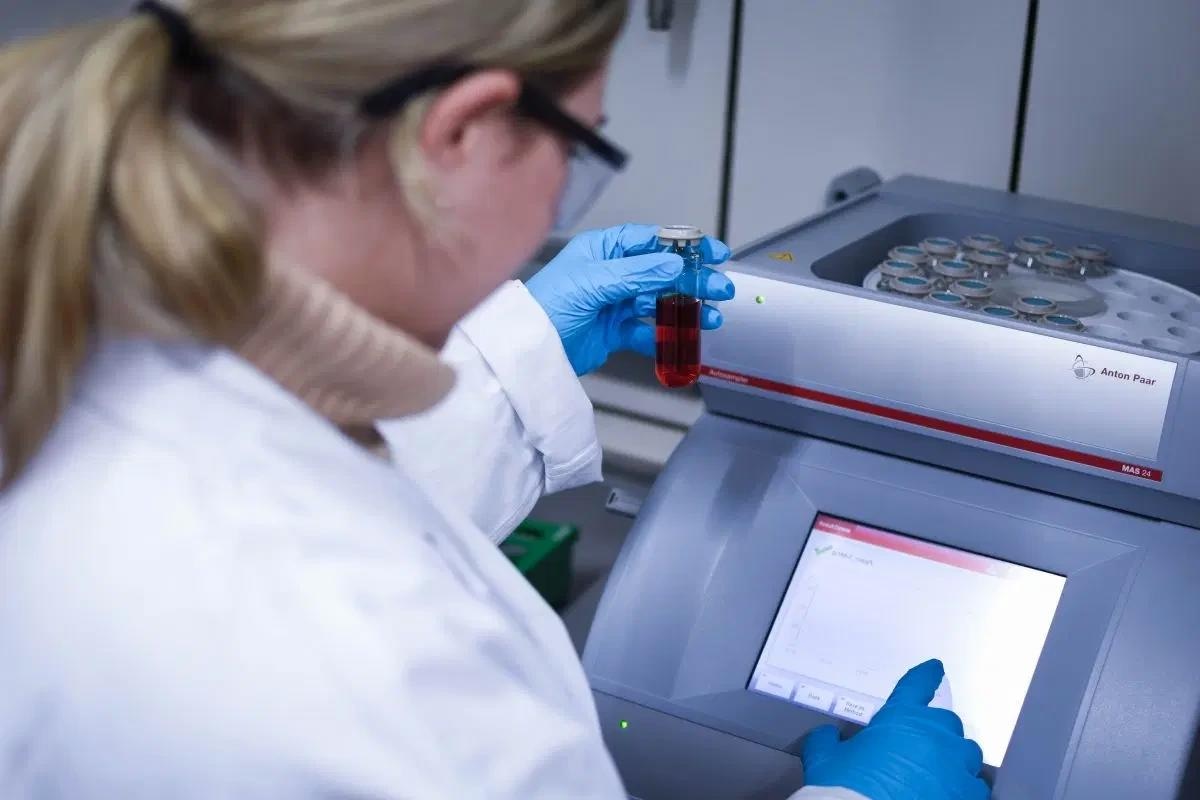Researchers from the University of Bayreuth’s “SolTech” research network and the Bavarian Centre for Battery Technology have unveiled a novel approach to producing electrocatalysts: a quick, low-temperature synthesis of unique ceramic materials (high-entropy oxides).
 The sample is placed in the microwave reactor for irradiation. Image Credit: Jürgen Rennecke
The sample is placed in the microwave reactor for irradiation. Image Credit: Jürgen Rennecke
The outcomes of the Chair of Physical Chemistry III and the Max Planck Institute for Iron Research in Düsseldorf could lead to future improvements in the energy efficiency of water electrolysis and related hydrogen generation. The journal Advanced Functional Materials has recently published the findings.
What For?
Water electrolysis is playing a bigger role in the generation of hydrogen due to climate change and the need to switch from fossil fuels to renewable energy sources. Catalysts are needed for both the proton reduction to hydrogen and the subsequent oxygen generation during the oxidation of water, which is the other side of electrolysis.
Current procedures use components that are hard to come by and are incredibly energy- and time-intensive. Therefore, the main task at hand is the creation of affordable, non-toxic, sustainable, and active catalysts.
Iron-rich high-entropy transition metal oxides can be synthesized at low temperatures and short timeframes with materials that are among the most prevalent, and hence most accessible, elements in the earth’s crust, thanks to the innovative microwave synthesis described here.
At the moment, the majority of electrocatalysts are based on ruthenium oxide or iridium oxide, which substantially increases material prices and complicates large-scale growth in terms of material availability. For these processes, high-entropy transition metal oxides are becoming more and more intriguing. Nevertheless, lengthy synthesis durations and high temperatures are typically required to produce them.
In this work, we present for the first time a low-temperature synthesis of high-entropy oxides, more precisely of spinels with a high iron content.
Dr. Roland Marschall, Holder, Chair of Physical Chemistry III, University of Bayreuth
The new type of microwave synthesis allows the temperature to be lowered to 225 °C and the synthesis period to be reduced to minutes (typically 5–30 minutes). This makes the synthesis considerably less energy-intensive on the one hand, and on the other hand, it makes it possible to produce nanoparticles.
Since the catalytic processes needed for electrolysis occur on the surface of nanoparticles, which have an extremely high surface-to-volume ratio, this is especially relevant in the context of catalysis.
“In our work, we were able to show for the first time that a wide variety of different compositions with up to seven different metals in addition to iron can be achieved with this simple low-temperature synthesis,” Dr. Marschall added.
The augmentation of catalytic activity was possible by partially substituting iron with cobalt, which is renowned for its high activity.
Marschall further added, “Finally, the activity of the catalysts depends to a large extent on the composition - but this is not freely variable in all previous synthesis methods. Our method, on the other hand, is highly flexible, which enables the incorporation of a large number of elements in different oxidation states and also allows the composition and thus the activity of the catalysts to be adjusted.”
Prof. Marschall was assisted by research assistants Dr. Judith Zander (funded by BayBatt at the University of Bayreuth and the “SolTech” research network), Julia Petra Wölfel, and Dr. Morten Weiss. Dr. Yiqun Jiang, Dr. Ningyan Cheng, and Dr. Siyuan Zhang from the Max Planck Institute for Iron Research in Düsseldorf were also involved.
Journal Reference:
Zander, J., et. al. (2023) Medium- and High-Entropy Spinel Ferrite Nanoparticles via Low-Temperature Synthesis for the Oxygen Evolution Reaction. Advanced Functional Materials. doi:10.1002/adfm.202310179